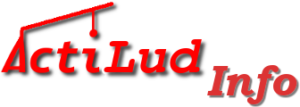Repercussion is one of the most powerful and simplest techniques to implement when a zebra puzzle has multiple grids. It starts with a true sign on a central grid and projects an entire row into another grid. The row can contain false signs, true signs, and even Booleans.
True sign on a central grid
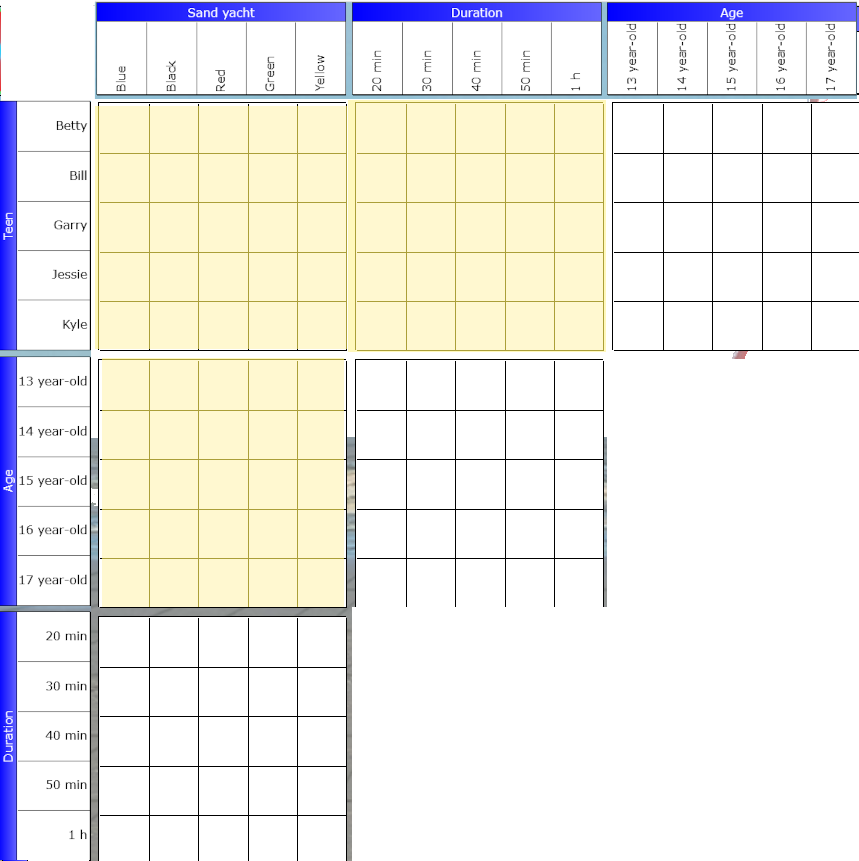
Please note that a peripheral grid is a grid to the right or below a central grid; therefore the grid (teen, duration) is peripheral for the grid (teen, yacht), but it is central for the grid (teen, age).
If a true sign is in one of the central grids, it acts as a kind of pivot for the row or column of the corresponding grids. Let’s see this with an example:
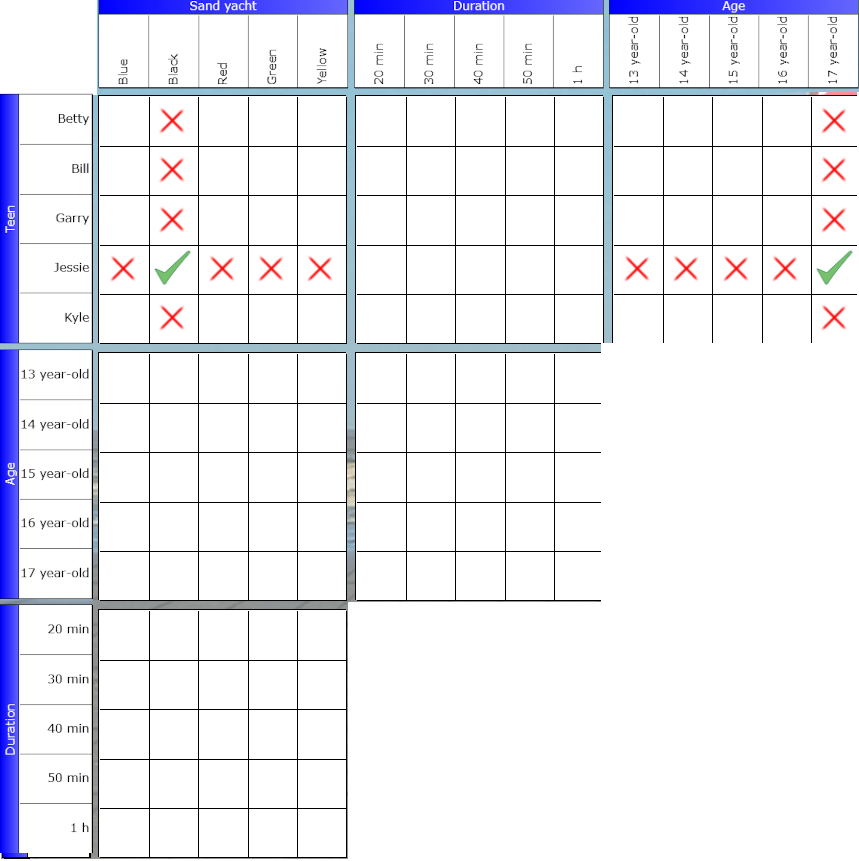
Jessie drives a black yacht and is 17 years old. The implication is easy to find: the driver of the black yacht is 17 years old.
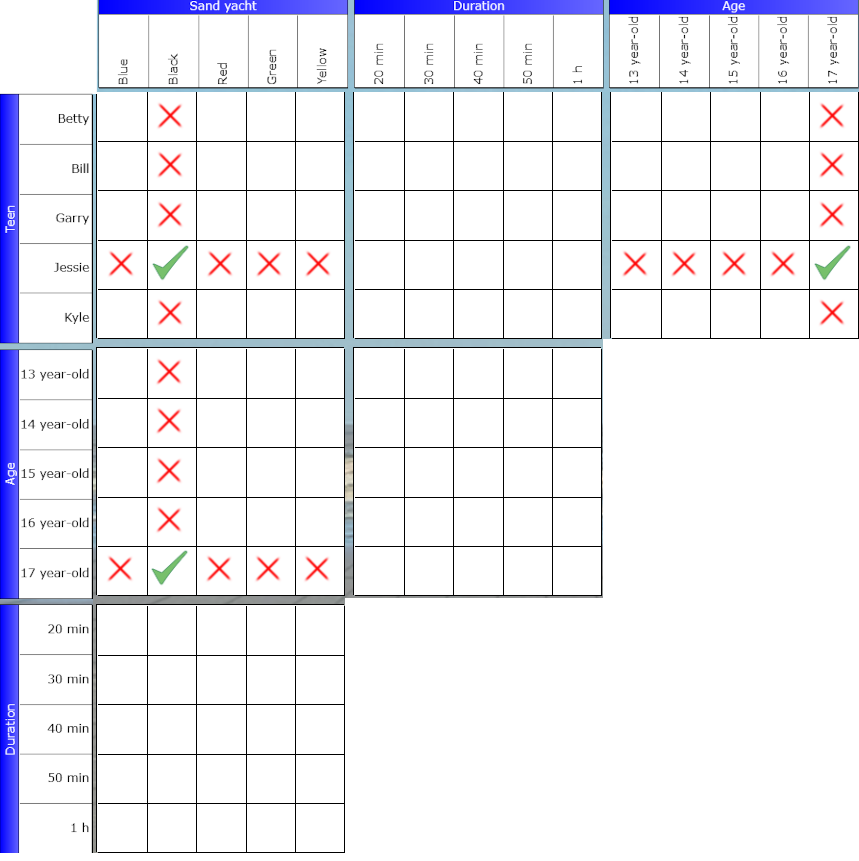
It’s as if we duplicated the line (Jessie, age) and rotated it towards the column (Black, age), the center of rotation (=the pivot) being the box (Jessie, Black):
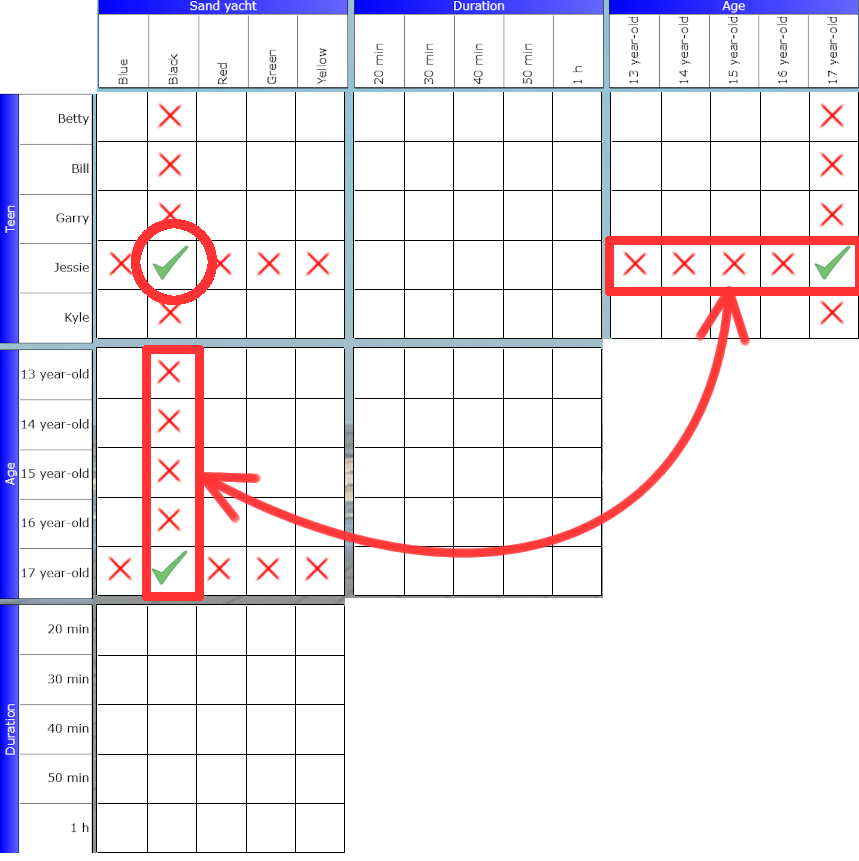
Once the rotation is done, we of course fill the empty boxes near the true sign in the “17 years” line with false boxes .
This is the technique of repercussion: the contents of one row are reflected on another, taking into account the pivot. It’s a powerful technique that allows you to quickly fill rows, as we see in the example below.
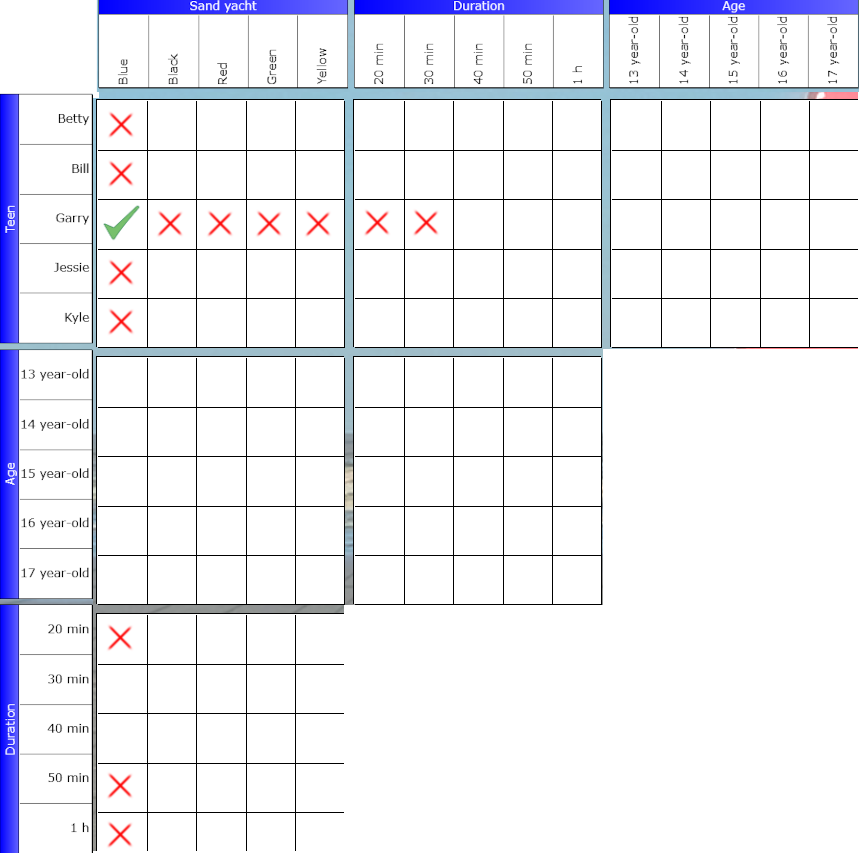
It is important to understand that the impact is two-way. Here, what is in the column (Duration, blue) is reflected in the row (Garry, duration) and vice versa:
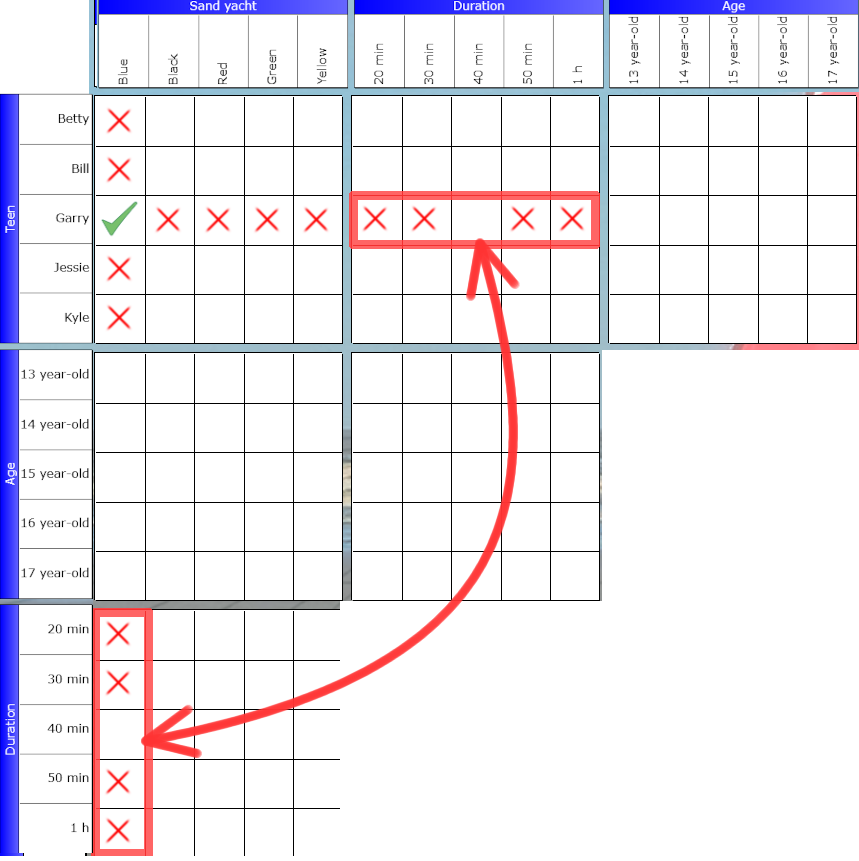
Now, all you have to do is apply the complement technique to discover that Garry drives for 40 minutes. Which wasn’t entirely obvious at first!
True sign on a peripheral grid
This time there will not be a rotation, but a translation:
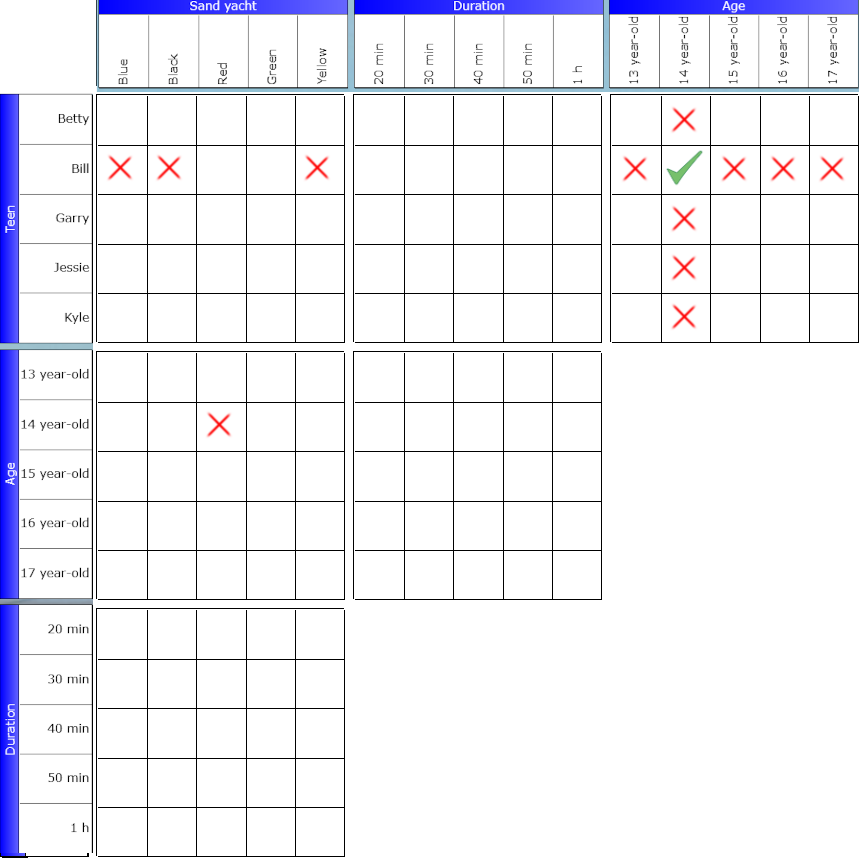
If we look at this grid, we see that Bill is 14 years old, but his yacht is neither blue, black, nor yellow. We can therefore deduce that the 14-year-old teenager does not drive these colors. Conversely, we see that the 14-year-old teenager does not drive a red yacht. However, since Bill is 14, he therefore does not drive a red yacht.
This reasoning can be visualized by merging the two lines (Bill, Yacht) and (14 years, Yacht):
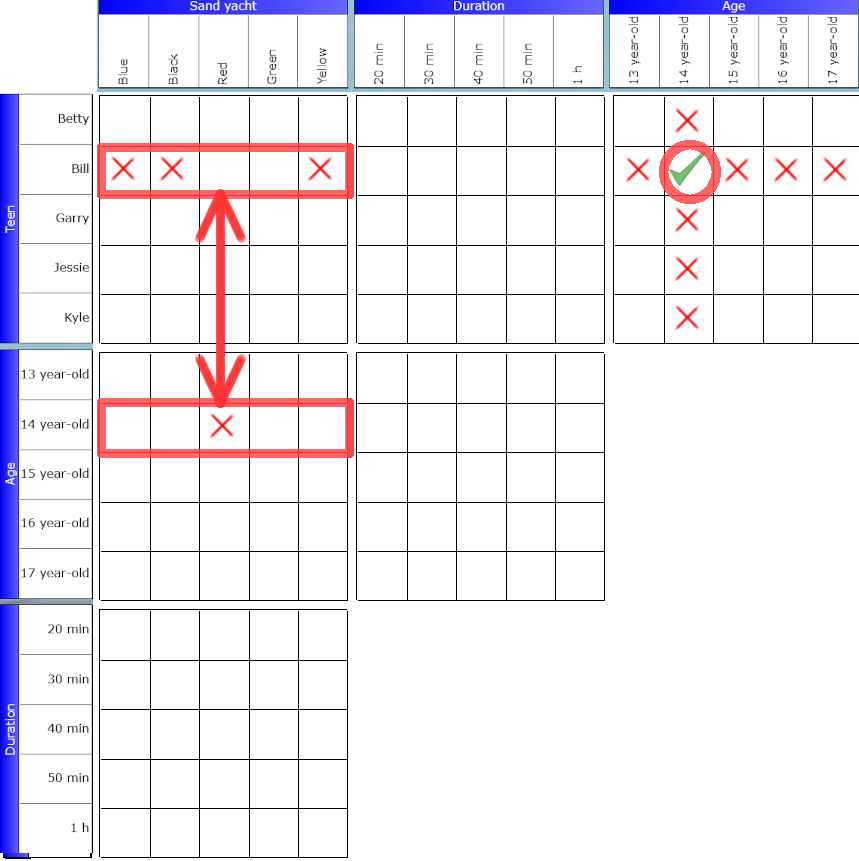
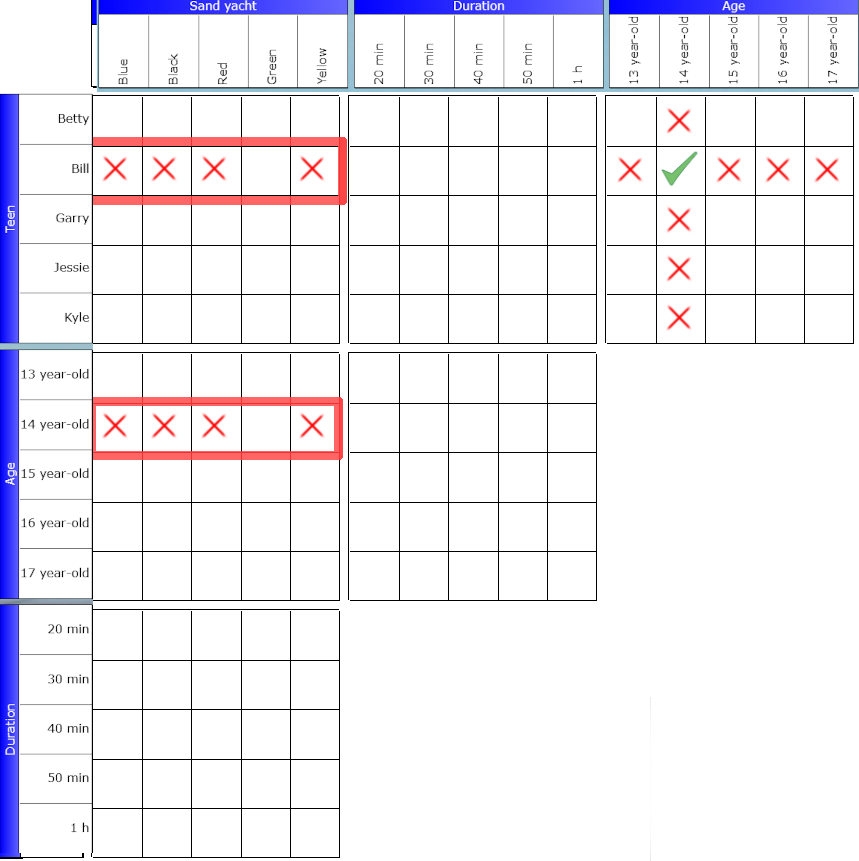
Where we see, after using the complement technique, that Bill is driving a green yacht.
Please note: these cases are examples; a true sign does not always appear!
Of course, the translation can also apply to columns:
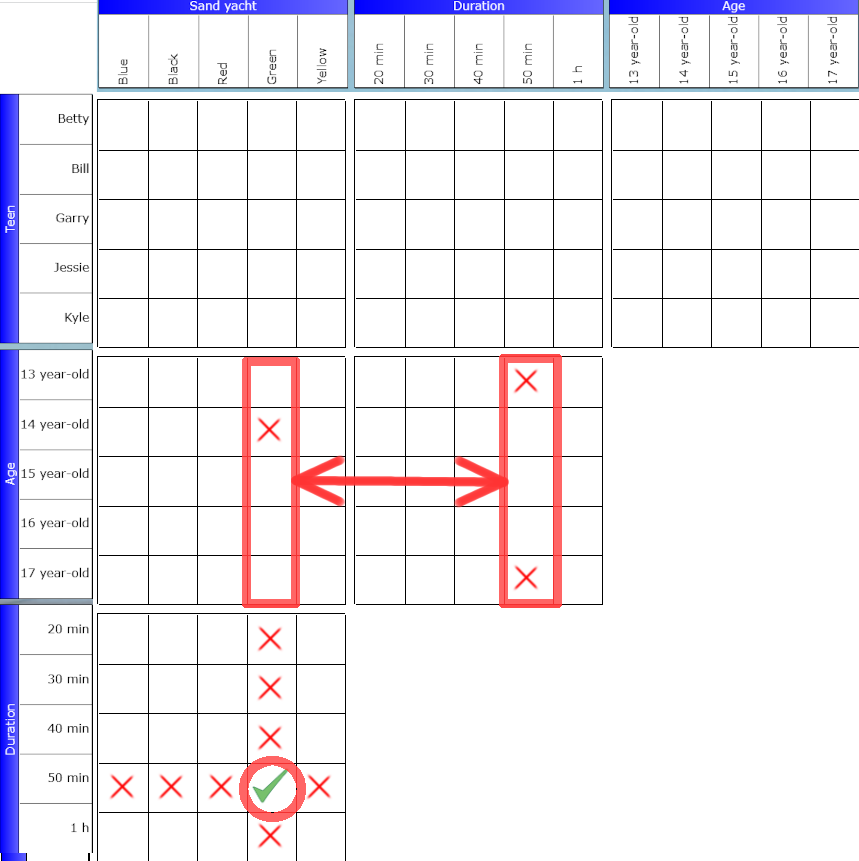
Here we conclude that the driver of the green yacht, as well as the one who drives for 50 minutes, is neither 13, nor 14 nor 17 years old.
The impact: find the grids concerned
For a rotational or translational impact to be possible, the two grids whose rows rotate or translate must have the same header in common .
